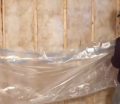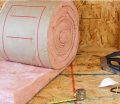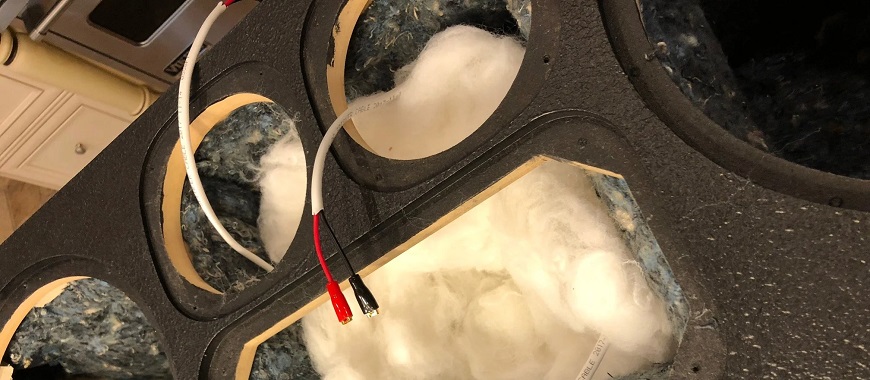
To fix fiberglass insulation in a sub box, begin by gathering the necessary materials, including fiberglass batts or rolls, a utility knife, and safety gloves. First, ensure the sub box is clean and free of debris. Measure the dimensions of the box to cut the fiberglass insulation to the correct size. Wear safety gloves and a mask to protect yourself from fiberglass particles. Place the cut insulation inside the sub box, making sure it fits snugly against all surfaces. Secure the insulation if needed and seal any gaps to prevent air leaks. Proper installation of fiberglass insulation in a sub box enhances both thermal regulation and acoustic performance, ensuring optimal functionality. Fiberglass insulation in sub box improves bass, reduces vibrations, enhances clarity, and requires proper sealing for best results.
What is Fiberglass Insulation in Sub Box?
Fiberglass insulation in sub box enclosures is a method used to enhance the acoustic performance of a subwoofer. By lining the inside of the subwoofer box with fiberglass insulation, the material absorbs sound waves, reduces unwanted vibrations, and prevents reflections inside the box, resulting in improved bass response and clarity. Fiberglass is a popular choice for subwoofer insulation due to its density and sound-absorbing properties, which contribute to a more accurate and controlled sound.
While the use of fiberglass insulation in sub box setups can significantly improve sound quality, it is important to follow proper installation techniques to avoid potential health risks, such as exposure to fiberglass particles. The insulation should be handled with care, as the fibers can cause irritation to the skin, eyes, and respiratory system. Additionally, proper securing of the insulation is necessary to prevent it from interfering with the subwoofer’s drivers.
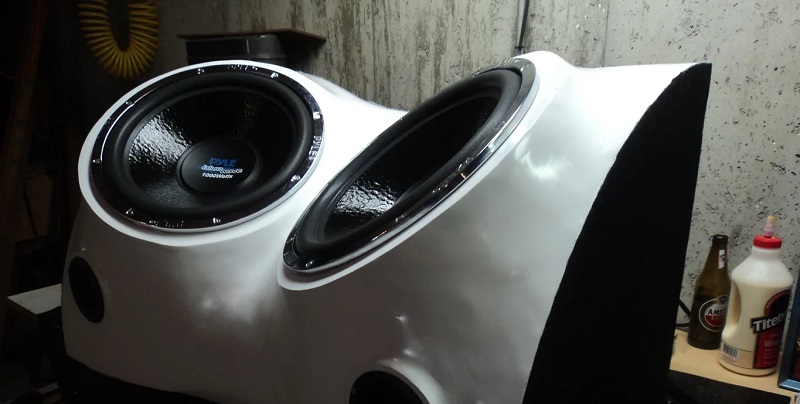
What is Fiberglass Insulation?
Fiberglass insulation is a type of thermal and acoustic insulation made from fine fibers of glass. It is commonly used in construction to improve energy efficiency and soundproofing. The material works by trapping air in tiny pockets between its fibers, which helps to slow down the transfer of heat. In sub boxes, fiberglass insulation plays a crucial role in ensuring that electrical components remain stable and function optimally by maintaining a consistent temperature and reducing noise.
Fiberglass insulation is a material composed of fine long glass fiber. It is widely used in construction and manufacturing for its thermal and acoustic insulating properties. The insulation works by trapping air in its fibrous structure, which slows the transfer of heat and reduces noise. In sub boxes, fiberglass insulation helps maintain a stable temperature and minimizes sound transmission, making it a popular choice for various applications.
Fiberglass insulation in sub boxes is an important consideration for various applications, including electrical enclosures, speaker boxes, and other specialized containers. This type of insulation is favored for its effectiveness in managing temperature and sound, contributing to both operational efficiency and comfort. In this detailed guide, we will explore the benefits, installation techniques, maintenance practices, and considerations for using fiberglass insulation in sub boxes.
Pros and Cons of Best Fiberglass Insulation in a Fiberglass Box
Advantages:
- Enhanced Sound Quality: The best fiberglass insulation in a fiberglass box improves sound clarity by absorbing unwanted internal reflections and dampening vibrations, resulting in cleaner bass and reduced resonance.
- Improved Bass Response: It allows the sub box to behave like a larger enclosure, enhancing bass depth and overall audio performance, especially in compact setups.
- Durability: Fiberglass insulation is highly durable, maintaining its performance over time, and is ideal for use in high-power audio systems.
- Custom Fit: Flexible and easy to cut, fiberglass insulation can be installed in various fiberglass box designs for precise acoustic optimization.
Disadvantages:
- Health Risks: Handling fiberglass insulation requires precautions, as it can irritate skin, eyes, and lungs without proper protective gear.
- Moisture Sensitivity: High humidity or water exposure can reduce its effectiveness and potentially lead to mold growth.
- Maintenance: Periodic inspection and cleaning are necessary to sustain its insulating and acoustic properties.
Safety Tips for Working with Fiberglass Insulation in Sub Box
When handling fiberglass insulation in sub box setups, safety precautions are essential to minimize the risks associated with exposure to fiberglass particles. Fiberglass is made of fine glass fibers, which can cause irritation to the skin, eyes, and lungs if not handled properly. Following these safety tips can help ensure a safe and effective installation process.
- Wear Protective Gear: Always wear gloves, long sleeves, goggles, and a dust mask when working with fiberglass insulation. This protective gear will help prevent skin irritation and reduce the risk of inhaling fiberglass particles. A long-sleeved shirt and pants can also protect your skin from direct contact with the insulation.
- Work in a Well-Ventilated Area: Fiberglass particles can become airborne during installation, so it’s important to work in an area with good ventilation. If possible, perform the installation outdoors or in a space with windows or fans to allow fresh air to circulate. This will help reduce the concentration of airborne fibers.
- Handle the Insulation Carefully: Fiberglass insulation is delicate and can break apart easily, releasing small fibers into the air. Handle the insulation gently to avoid tearing or breaking it, and use slow, deliberate movements to minimize the spread of fibers. When cutting the insulation, use a sharp utility knife and make clean, straight cuts to reduce the number of loose fibers.
- Seal the Insulation Properly: After placing the fiberglass insulation in the sub box, it is important to secure it properly to prevent fibers from becoming airborne or entering the subwoofer’s driver. Some users opt to cover the insulation with a thin fabric, such as grill cloth, which allows air to pass through while keeping the insulation contained. Others may use pillowcases or similar materials to encase the insulation. This helps maintain a clean environment inside the sub box and prevents fibers from causing damage to the subwoofer’s components.
- Clean Up Thoroughly: Once the installation is complete, it’s important to clean up any loose fiberglass particles from your workspace. Use a vacuum with a HEPA filter to remove any fibers from surfaces, and avoid sweeping, as this can stir up dust and particles. Wash your hands and any exposed skin with soap and water after handling fiberglass insulation to remove any lingering fibers. This is especially important if you’ve been in contact with exposed fiberglass insulation, as it can irritate the skin and respiratory system. Proper hygiene practices can help minimize any potential health risks associated with fiberglass exposure.
- Dispose of Fiberglass Waste Responsibly: Dispose of any leftover insulation or waste materials according to local regulations. Fiberglass insulation should be placed in a sealed plastic bag to prevent fibers from becoming airborne during disposal. Check with your local waste management facility for proper disposal methods.
How about Using Fiberglass Insulation in Sub Box for Optimal Sound?
For those looking to achieve the best sound performance from their subwoofer, fiberglass insulation in sub box installations can be an effective solution. Additionally, using loose fill fiberglass insulation enhances sound absorption and minimizes resonance, contributing to a cleaner, more accurate bass response.When properly installed, fiberglass insulation can significantly improve the acoustic performance of the subwoofer by reducing internal reflections, minimizing vibrations, and enhancing bass response. This makes it a valuable addition to sealed subwoofer boxes, where sound quality is paramount.
Although fiberglass insulation requires careful handling and installation, the benefits it offers in terms of sound clarity and bass depth are well worth the effort. With the right tools, materials, and safety precautions, users can create a high-performance subwoofer enclosure that delivers superior audio quality for years to come.
Fiberglass Insulation in Sub Box:Maintenance, Costs, Alternatives
Fiberglass insulation in sub boxes is an essential consideration for maintaining energy efficiency and managing temperature fluctuations in various applications. This material, known for its excellent thermal and acoustic properties, provides significant benefits when used in sub boxes, which are often found in electrical panels, junction boxes, or other enclosures. In this comprehensive guide, we will explore the various aspects of using fiberglass insulation in sub boxes, including its advantages, installation techniques, and maintenance.
Maintenance of Fiberglass Insulation in Sub Boxes
Inspection: Regular inspections of the fiberglass insulation are crucial to ensure its continued effectiveness. Check for any signs of damage or wear, such as tears, compression, or moisture infiltration. Address any issues promptly to maintain the insulation’s performance.
Cleaning: While fiberglass insulation is generally low-maintenance, it is important to keep the sub box clean. Avoid using excessive water or harsh cleaning agents, as these can damage the insulation. Instead, use a dry or slightly damp cloth to remove any dust or debris.
Replacement: Over time, fiberglass insulation may need to be replaced due to wear and tear. If the insulation becomes damaged or loses its effectiveness, replace it with new fiberglass insulation to ensure continued performance. Follow the manufacturer’s guidelines for selecting and installing replacement insulation.
The Cost of Fiberglass Insulation in Sub Boxes
Material Costs: The cost of fiberglass insulation can vary depending on the type and thickness of the material. In general, fiberglass insulation is considered an affordable option compared to other insulation materials. The price may also vary based on the supplier and quantity purchased.
Installation Costs: If you are hiring a professional to install the fiberglass insulation, there will be additional costs for labor. Installation costs can vary depending on the complexity of the job and the experience of the installer. For DIY installations, the primary costs will be for the insulation material and any necessary tools or supplies.
Long-Term Savings: While there may be initial costs associated with fiberglass insulation, the long-term savings can be significant. By improving energy efficiency and reducing the need for repairs or replacements, fiberglass insulation can provide a good return on investment over time.
Environmental Considerations
Sustainability: Fiberglass insulation is made from recycled glass, making it a more environmentally friendly option compared to some other insulation materials. By using fiberglass insulation, you are contributing to the reduction of waste and the conservation of natural resources.
Recycling: When replacing fiberglass insulation, consider recycling the old material if possible. Many local recycling centers accept fiberglass insulation, and recycling helps to minimize the environmental impact of insulation waste.
Alternatives to Fiberglass Insulation
While fiberglass insulation is a popular choice, there are alternative materials that can also be used in sub boxes. Some of these alternatives include:
Polyester Fill: Polyester insulation is another option that provides similar thermal and acoustic benefits as fiberglass. It is made from recycled plastic bottles and is often considered to be more resistant to moisture. Polyester fill may be preferred in environments where humidity or moisture is a concern.Foam Board Insulation: Foam board insulation is another alternative that offers excellent thermal performance. It is rigid and can be cut to fit the dimensions of the sub box. Foam board insulation is often used in situations where high R-values are required.
How CertainTeed Fiberglass Insulation Improves Energy Efficiency
Reddit Discussions on Fiberglass Insulation in Sub Boxes
A curated summary of opinions and experiences from the Reddit community highlights various aspects of using fiberglass insulation in sub boxes. According to discussions, users frequently mention the effectiveness of fiberglass insulation in managing temperature and reducing noise. However, some also point out challenges such as installation difficulties and potential concerns about moisture.
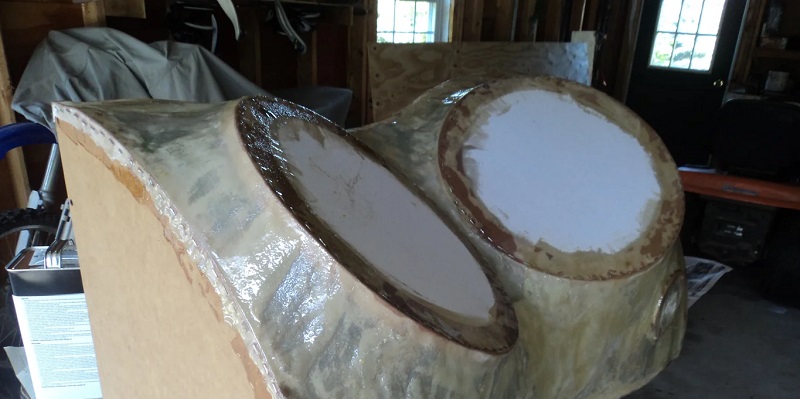
Challenges: Common challenges discussed include the difficulty of cutting and fitting fiberglass insulation, as well as issues related to moisture infiltration. Users have shared tips for overcoming these challenges, such as using specialized tools and ensuring proper sealing.
Preferred Alternatives: Some Reddit users prefer alternatives like polyester fill due to its resistance to moisture and ease of installation. However, fiberglass insulation remains a popular choice for its affordability and proven performance.
Advice from Enthusiasts and Professionals: Enthusiasts and professionals alike recommend fiberglass insulation for its cost-effectiveness and reliability. They advise following proper installation techniques and regularly inspecting the insulation to ensure its continued effectiveness.
The Key of Installing Fiberglass Insulation in Sub Box
Installing fiberglass insulation in sub box enclosures requires attention to detail and care to maximize the benefits. First, selecting the right type of fiberglass insulation is important. GangLong Fiberglass provides materials specifically designed for acoustic applications, making it an ideal choice for subwoofer insulation. The insulation must be cut to fit the specific dimensions of the sub box and applied evenly throughout the interior.
When cutting the insulation, use a sharp knife or insulation cutter to create clean, precise cuts that fit snugly against the walls of the enclosure. Be sure not to overstuff the box, as this can reduce air volume and negatively affect sound quality. It’s also important to ensure that the insulation doesn’t obstruct the subwoofer’s driver, which could impair the speaker’s movement and create sound distortions.
Once the insulation is cut and placed inside the sub box, it’s recommended to secure it with a layer of breathable fabric or mesh, such as grill cloth. This additional step prevents the insulation fibers from becoming loose and potentially interfering with the subwoofer’s internal components. Additionally, covering the insulation helps maintain a clean, organized appearance inside the box.
Installation of Fiberglass Insulation in Sub Boxes
Preparation: Before installing fiberglass insulation in a sub box, it is essential to prepare the area. Clean the sub box thoroughly to remove any dust, debris, or residues. Measure the dimensions of the sub box to determine the amount of insulation needed. Ensure that you have the right tools and materials for the installation process.
Cutting and Fitting: Fiberglass insulation typically comes in batts or rolls. Use a utility knife to cut the insulation to fit the dimensions of the sub box. Make sure that the insulation fits snugly without leaving any gaps. Proper fitting is crucial to ensure that the insulation performs effectively and provides optimal thermal and acoustic benefits.
Placement: Place the cut insulation inside the sub box, making sure it covers all surfaces evenly. It is important to position the insulation so that it covers any exposed areas where heat or sound might escape. If necessary, secure the insulation in place using appropriate fasteners or adhesive as recommended by the manufacturer.
Sealing: After placing the insulation, seal any gaps or openings in the sub box. This helps to prevent air leaks and ensures that the insulation remains effective. Use sealant or insulating tape to close any gaps and maintain the integrity of the insulation.
The Key of Choosing the Right Fiberglass Insulation for Sub Box
When selecting fiberglass insulation for a sub box, there are a few important factors to consider. First, the thickness of the insulation should match the size and design of the subwoofer enclosure. Thicker insulation will provide better sound absorption, but it should not reduce the internal volume of the sub box too much, as this can negatively affect bass performance.
GangLong Fiberglass offers a variety of insulation options suitable for different subwoofer applications, from standard home theater systems to more specialized automotive or marine subwoofers. When choosing the right product, consider factors such as the density of the insulation, its ability to absorb sound, and its ease of installation.
In terms of material, fiberglass is known for its excellent sound-absorbing properties, which make it ideal for subwoofer enclosures. However, it is important to ensure that the insulation is properly secured inside the box to prevent any loose fibers from affecting the subwoofer’s performance. Using a protective covering, such as grill cloth or fabric, will help contain the fibers while allowing the sound to pass through.
Unfaced vs. Faced Fiberglass Insulation: Key Differences
Fiberglass vs. Polyfill: A Comparison for Sub Boxes
When it comes to insulating sub boxes, two of the most commonly used materials are fiberglass insulation and polyfill (polyester stuffing). Both materials serve the purpose of absorbing sound and reducing internal reflections, but they differ in their properties and performance.
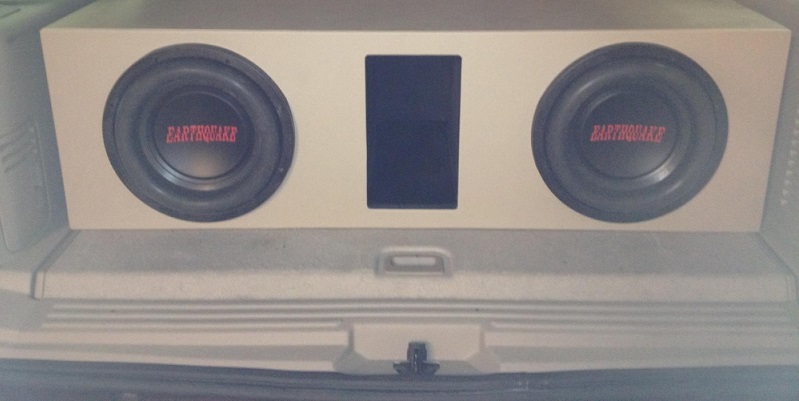
Fiberglass insulation, like the options provided by GangLong Fiberglass, is known for its high density and excellent sound absorption capabilities. It is particularly effective in reducing vibrations and controlling resonance inside sealed sub boxes. Fiberglass insulation also slows down sound waves, which can make a smaller subwoofer box behave as though it is larger, allowing for deeper bass.
Polyfill, on the other hand, is a softer, fluffier material made from polyester fibers. It is easier to work with and poses less of a health risk than fiberglass, as it does not release fine particles into the air. However, polyfill is generally less effective than fiberglass at absorbing sound and controlling vibrations. For subwoofer applications that require maximum sound quality, fiberglass insulation in sub box setups is often the preferred choice.
Fiberglass Insulation Prices: Factors That Influence Cost
FAQs about Fiberglass Insulation in Sub Box
Yes, adding insulation to a subwoofer box can improve sound quality. The primary reason is that insulation helps reduce standing waves and internal reflections within the enclosure, which can otherwise cause distortion. By dampening these internal sounds, the subwoofer can produce a cleaner and more accurate bass response. The type of insulation commonly used is polyfill or fiberglass, but the choice depends on personal preferences and specific needs. Insulation can make a small box behave as if it’s larger by slowing down the sound waves inside the enclosure, which is particularly beneficial for smaller subwoofer boxes. However, overstuffing can lead to a muffled sound, so it’s important to find the right balance.
Fiberglass can be a great material for subwoofer enclosures because of its durability, rigidity, and light weight. Fiberglass enclosures can be custom-molded into unique shapes, making them ideal for specialized or space-limited applications. Additionally, fiberglass is excellent at resisting vibration and resonance, which ensures that the sound output remains clear without unwanted distortions caused by enclosure vibrations. This material also adds strength without excessive weight, making it suitable for mobile subwoofer setups, such as those in cars or boats. However, building with fiberglass can be labor-intensive and might require more expertise than traditional wood-based subwoofer enclosures.
While fiberglass insulation can be effective in many applications, it is generally not recommended to place it inside electrical boxes. Electrical boxes contain wiring and other components that could potentially generate heat, and stuffing fiberglass insulation inside might increase the risk of overheating. Although fiberglass itself is non-conductive and fire-resistant, it is important to maintain proper ventilation and allow for air circulation around electrical components to prevent heat buildup. Additionally, fiberglass insulation fibers may irritate the skin or respiratory system when disturbed, so it’s important to be cautious when using it near electrical installations.
Yes, adding insulation to a subwoofer box can improve sound quality by reducing internal resonance and standing waves. This helps prevent unwanted noise and enhances bass clarity. Fiberglass insulation, polyfill, or acoustic foam can absorb sound waves inside the box, creating the illusion of a larger box volume and improving low-frequency response. However, the decision depends on the box type. Sealed enclosures often benefit from insulation due to their design, which emphasizes tight, controlled bass. Ported or vented boxes generally don’t need insulation as it can interfere with the tuning of the port. When using insulation, ensure it does not obstruct the subwoofer’s cone movement or airflow. Secure the material properly to avoid rattling or displacement. Fiberglass, while effective, may require handling precautions due to potential health risks. Alternatives like polyfill are safer and easier to work with while achieving similar results.
Fiberglass insulation generally requires a vapor barrier when installed in environments prone to moisture, like walls or ceilings in a home. However, when used in a subwoofer box, a vapor barrier is usually unnecessary. Subwoofer boxes are typically sealed and not exposed to significant humidity. The primary function of adding insulation inside a sub box is acoustic, not thermal, so moisture management isn’t a concern in this context. Without a vapor barrier, fiberglass insulation still effectively absorbs sound waves and enhances acoustic performance. If the subwoofer is placed in an area where moisture might become a problem, consider using closed-cell foam insulation or acoustic-grade materials that are less susceptible to dampness. These materials avoid potential issues such as mold or degraded performance caused by moisture absorption.
The number of fiberglass layers for a subwoofer box depends on the intended strength and durability. Typically, 3–5 layers of fiberglass mat or cloth are sufficient for most subwoofer enclosures. This thickness provides enough rigidity to withstand the internal pressure generated by the subwoofer. For high-power subwoofers or larger enclosures, you might need up to 7 layers to ensure structural integrity and prevent vibration or flexing. Apply each layer evenly, allowing proper curing time between applications to achieve a solid bond. Thicker walls enhance bass response by reducing vibrations and resonances that can distort sound quality. When working with fiberglass, ensure proper ventilation and wear safety gear to avoid exposure to harmful fumes or fibers. Reinforce critical areas like edges, joints, or mounting points with additional layers or bracing for optimal performance.
Fiberglass is an excellent material for speaker boxes due to its lightweight, durable, and easily moldable properties. It allows for custom-shaped enclosures that maximize available space and optimize acoustic performance. Fiberglass also provides rigidity, which is essential for reducing resonance and vibrations that can distort sound quality. Its non-porous nature ensures airtight enclosures, crucial for controlling sound waves in sealed and ported designs. While fiberglass is more labor-intensive and costly compared to traditional wood materials like MDF, it is ideal for specialized designs or applications where weight or space is a concern. Properly constructed fiberglass enclosures can enhance bass response and clarity, making them popular for automotive and custom audio systems. However, working with fiberglass requires skill, safety precautions, and patience to achieve professional-quality results.
Polyfill can make bass sound deeper by slowing down sound waves inside the subwoofer box. This creates the illusion of a larger internal volume, improving low-frequency response and making the bass appear fuller and more resonant. It’s especially effective in sealed enclosures where the added damping reduces standing waves and internal reflections. To use polyfill, stuff the enclosure loosely but evenly, avoiding overpacking, which can restrict the speaker’s movement. The amount required depends on the box size and design, but 1–2 pounds per cubic foot is a good starting point. While polyfill is easy to work with and inexpensive, it’s not a substitute for proper box design. It’s a fine-tuning method to enhance performance, particularly when a box is slightly undersized. Polyfill is often preferred over fiberglass for this application due to its safety and ease of handling.
Improving a speaker box’s sound quality involves several factors:
Optimize the design: Use appropriate dimensions and tuning for sealed or ported enclosures.
Reinforce the box: Add bracing to reduce vibration and resonance.
Use acoustic insulation: Line the interior with polyfill, fiberglass, or foam to dampen reflections and enhance clarity.
Seal leaks: Ensure the box is airtight, as air leaks degrade bass response and introduce distortion.
Choose quality materials: Use MDF, plywood, or fiberglass for rigidity and durability.
Positioning: Place the box in an optimal location to interact effectively with the room or vehicle acoustics.
Speaker alignment: Ensure the driver is properly mounted and sealed.
Combining these techniques ensures the box delivers clean, deep, and accurate sound while minimizing distortion and unwanted resonances.
The thickness of a fiberglass subwoofer box depends on the enclosure size and intended use. For most applications, walls built up to a thickness of 1/4 to 1/2 inch (3–6 layers of fiberglass mat) are adequate. This thickness provides enough strength to resist flexing and internal pressure from the subwoofer. High-power subwoofers or large enclosures may require thicker walls, up to 3/4 inch, to maintain structural integrity. Thicker layers also improve bass response by reducing vibrations that can distort sound. Use a combination of fiberglass mat and resin for optimal strength, ensuring each layer cures completely before adding the next. To avoid adding unnecessary weight, focus on reinforcing critical areas like edges, corners, and mounting points rather than uniform thickness throughout.
Fiberglass insulation has drawbacks that may make it less desirable for subwoofer boxes. While it is effective at absorbing sound waves, it is challenging to handle safely. The fine fibers can irritate skin, eyes, and lungs, requiring gloves, masks, and protective clothing during installation. Fiberglass insulation can also shed particles over time, posing health risks if inhaled in enclosed spaces like a car. Additionally, it lacks structural properties and may require adhesive or containment to stay in place within a sub box. Alternatives like polyfill or acoustic foam are safer and easier to work with, providing similar sound-dampening benefits without the handling issues. If fiberglass is used, seal it with fabric or mesh to minimize shedding and ensure safe, long-term performance.

As the editor of GangLong Fiberglass, I have years of experience and in-depth research, focusing on cable tray products, fiberglass solutions, and grille systems. I incorporate years of industry insights and practical experience into every content, committed to promoting the progress of the industry. At GangLong Fiberglass, my commitment is reflected in every product, from innovative cable trays to durable fiberglass solutions and sturdy grille systems. As an authoritative voice in the industry, my goal is to provide valuable information to professionals and businesses and promote forward-looking solutions.

